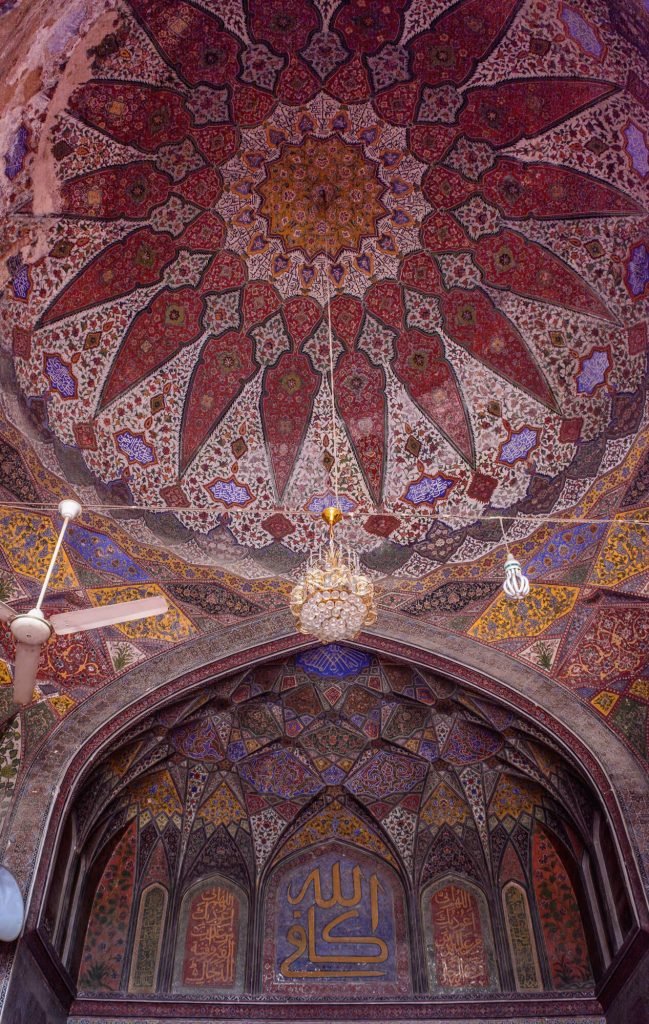Heritage
Wazir Khan Mosque | Islamic History and Architecture
The glorious Wazir Khan Mosque is a 17th-century Mughal-era mosque located in Lahore, Pakistan. It was established during the Mughal era by Hakim Shaikh Ilm-ud-din Ansari, also known as Wazir Khan, who was the governor of Lahore and a close aide of then-Mughal Emperor Shah Jehan.
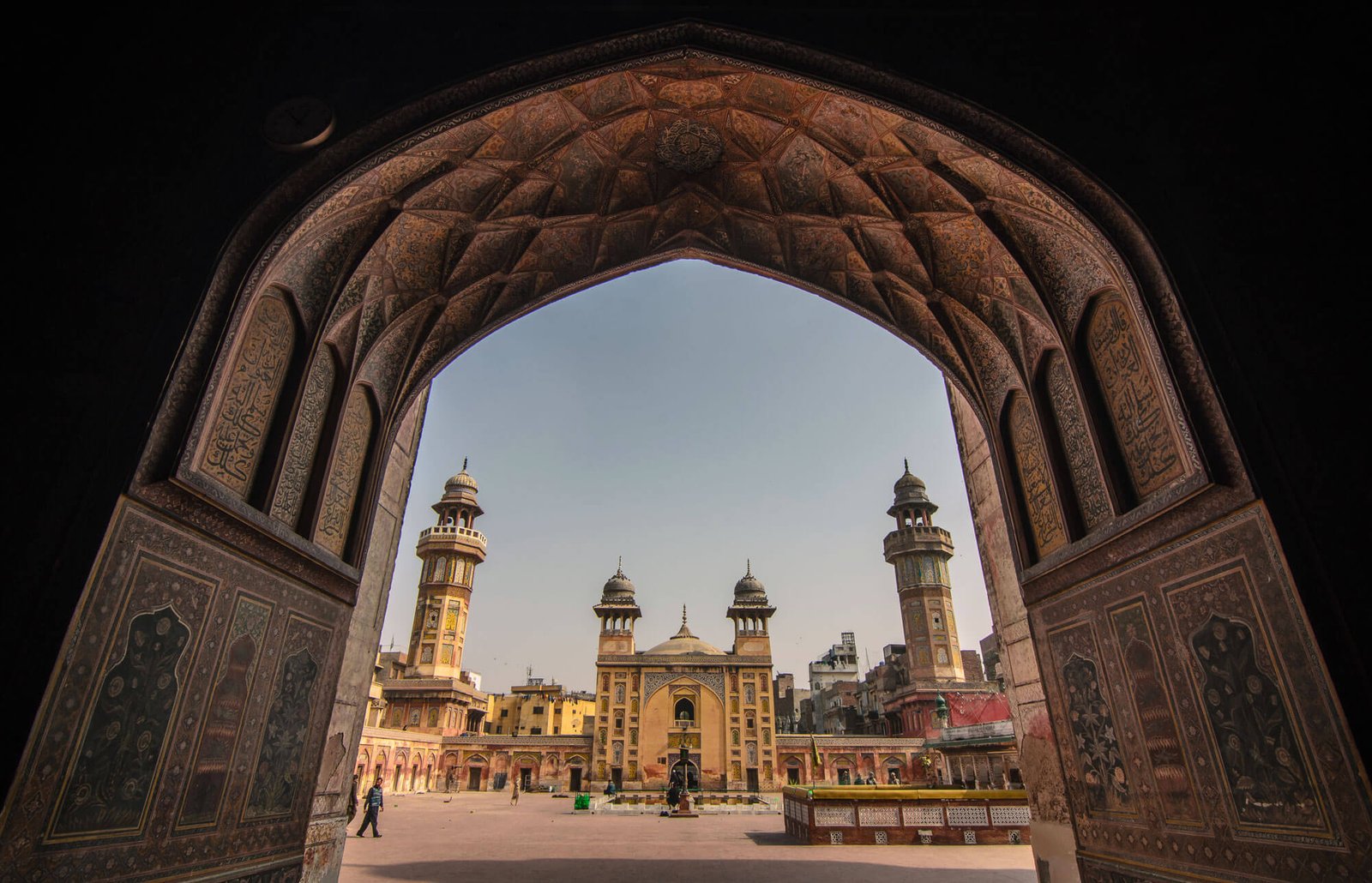
The glorious Wazir Khan Mosque is a 17th-century Mughal-era mosque located in Lahore, Pakistan. It was established during the Mughal era of Shah Jahan by Hakim Shaikh Ilm-ud-din Ansari, also known as Wazir Khan, who was the governor of Lahore and a close aide of then-Mughal Emperor Shah Jehan.
Masjid Wazir Khan is located in the Walled City of Lahore, on the southern side of Lahore’s Shahi Guzargah. The “Royal Trail,” as it was called, was the traditional route used by Mughal nobles on their way to their royal residence at the Lahore Fort.
The Wazir Khan Mosque was commissioned during the reign of Mughal Emperor Shah Jahan. The construction of Wazir Khan Mosque began in 1634 C.E. and was completed in 1641.
The Mosque is known for its trademark Mughal architectural features, with intricate patterns adorning its walls. It is considered to be one of the most ornately decorated Mughal-era mosques and is renowned for its intricate tile work, known as kashi-kari, as well as its interior surfaces that are almost embellished with elaborate Mughal-era design.

History of the Wazir Khan Mosque
The Wazir Khan Mosque was built between 1634 and 1641 C.E. during the reign of the Mughal emperor, Shah Jehan. It was commissioned by the chief physician of the Mughal Court, Hakeem Ilam-ud-din Ansari, better known by his royal title of Wazir Khan. Wazir Khan went on to become the subahdar, or Viceroy, of Punjab and commissioned a number of monuments in Lahore.
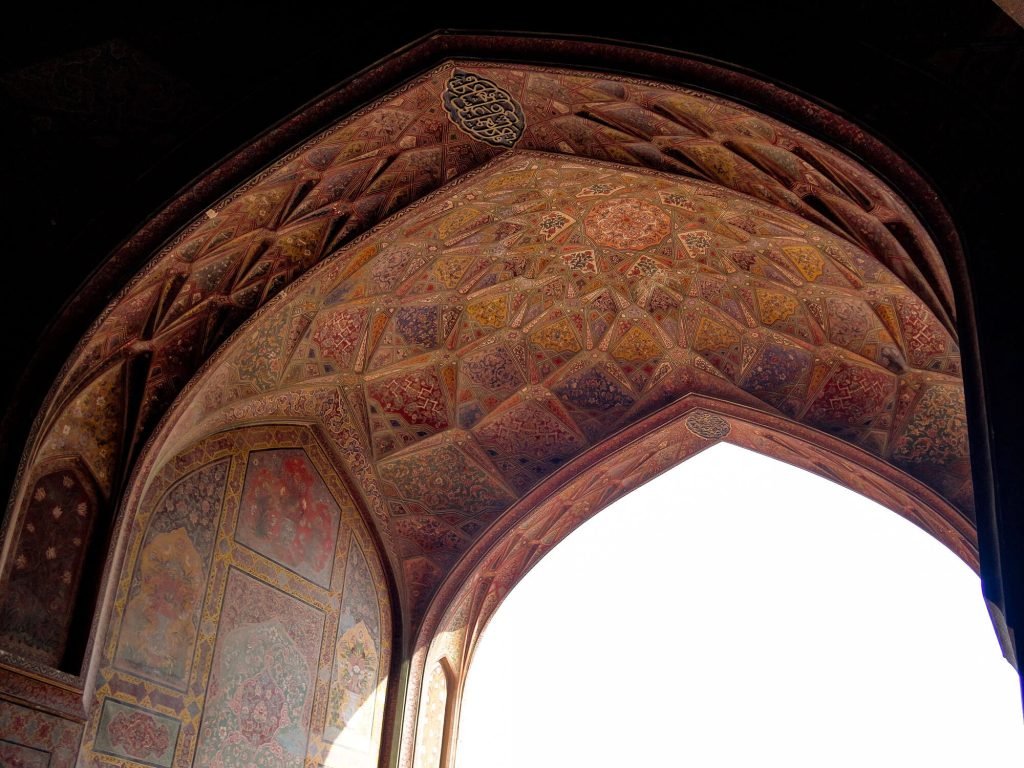
The Wazir Khan was constructed over a period of seven years and was built to enclose the ancient subterranean tomb of the esteemed Sufi saint Syed Mohammad Ishaq Gazrooni, also known as Miran Badshah, who migrated from Iran in the 13th Century and lived in Lahore during the time of the Turkish-Muslim Tughlaq dynasty.
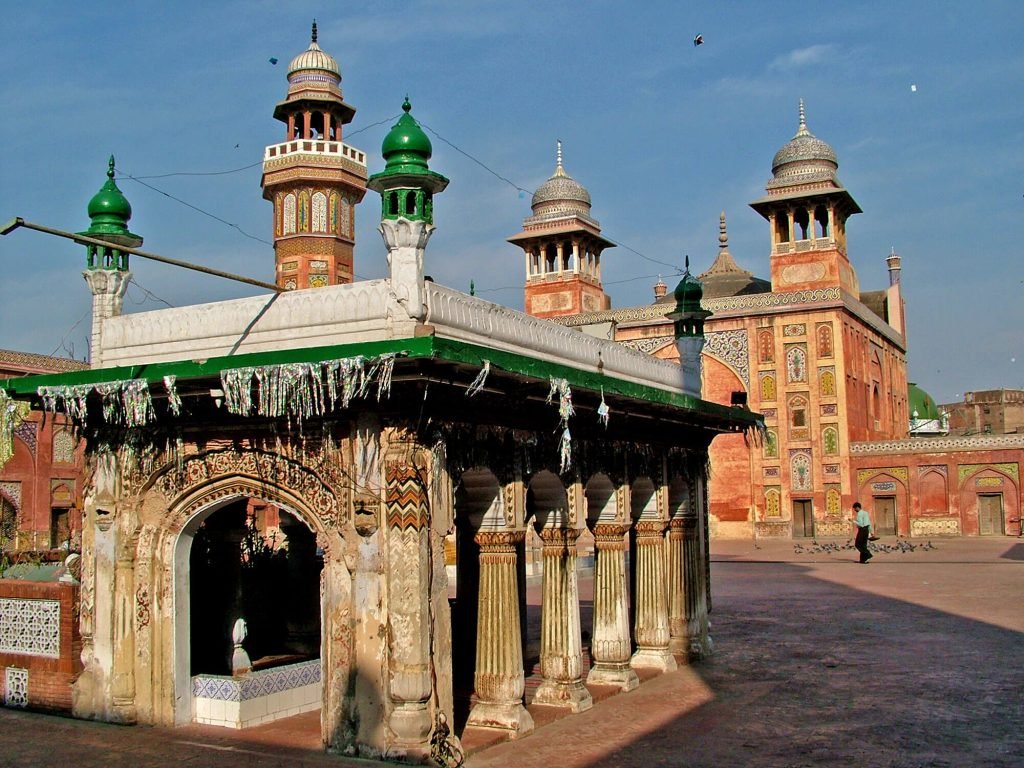
Legend has it that after he was buried, a pipal tree sprang up next to the grave, the leaves of which would be collected and used for “cures for various predicaments through the blessed leaves.” Another story is that of Ranjit Singh, the founder of the Sikh empire. When he seized Lahore, Ranjit Singh spent a night of merriment in the Wazir Khan Mosque with his favourite Moran Sarkar. That night, Singh and Sarkar fell ill and were informed by their spiritual guides that their indiscretions had angered the Pir.
Ranjit Singh sought forgiveness and assigned an annual tribute to the mosque, while Moran Sarkar started performing there every Thursday. It was a tribute that continued until its eventual ban by the President of Pakistan, Ayub Khan.
The Wazir Khan mosque is set on what was known as the Royal Trail, a 1.6-kilometer stretch from Delhi Gate, one of the 13 gates of the Walled City of Lahore, that faced the seat of the Mughal Empire. Mughal Emperors rode through this gate to the Lahore Fort.
Masjid Wazir Khan has borne witness to at least a dozen Mughal rulers, the colonial period of the British Raj, the partition of the Indian subcontinent, and the eventful history of Pakistan. The mosque was located in the center of the city, such that all the major routes and bazaars were linked to it at right angles. Being a short walk from the Lahore Fort, the Wazir Khan Mosque acquired political importance as it became the official destination for the Emperor’s Friday congregational prayers.
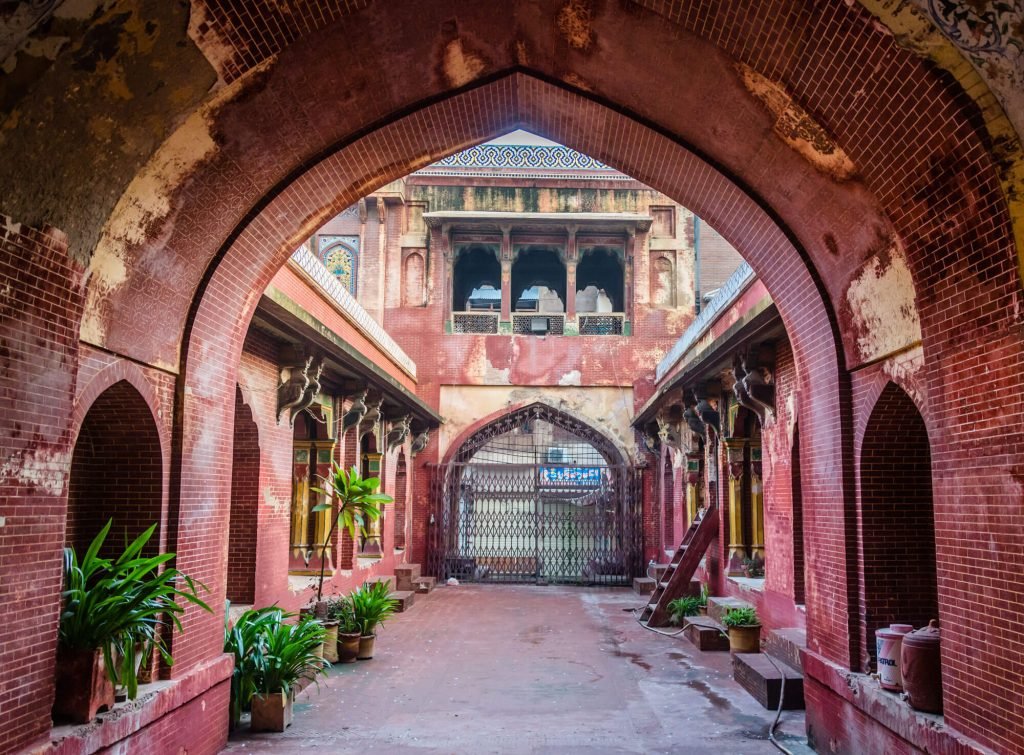
The mosque is part of a larger complex that includes a row of bazaars for calligraphers and bookbinders to repair holy manuscripts and paint Quranic verses. The mosque attests to the rich history and culture of the region and continues to be a symbol of Islamic rule in the city.
The architecture of Masjid Wazir Khan
Time stops within the mosque; its splendor is all too tangible and real. “It’s almost like a gateway to another world,” states Ali Asad Naqvi, an artist and a native Lahori. “It’s heavenly; almost like a door, a throne, a way to get intimate with the Oneness of Being—away from the hustle and bustle of the outside world.”
It is said that the trend of four minarets in each corner of a mosque was set by the Wazir Khan Mosque. It served as the Jamia Mosque for the city before the Badshahi Mosque came into being.
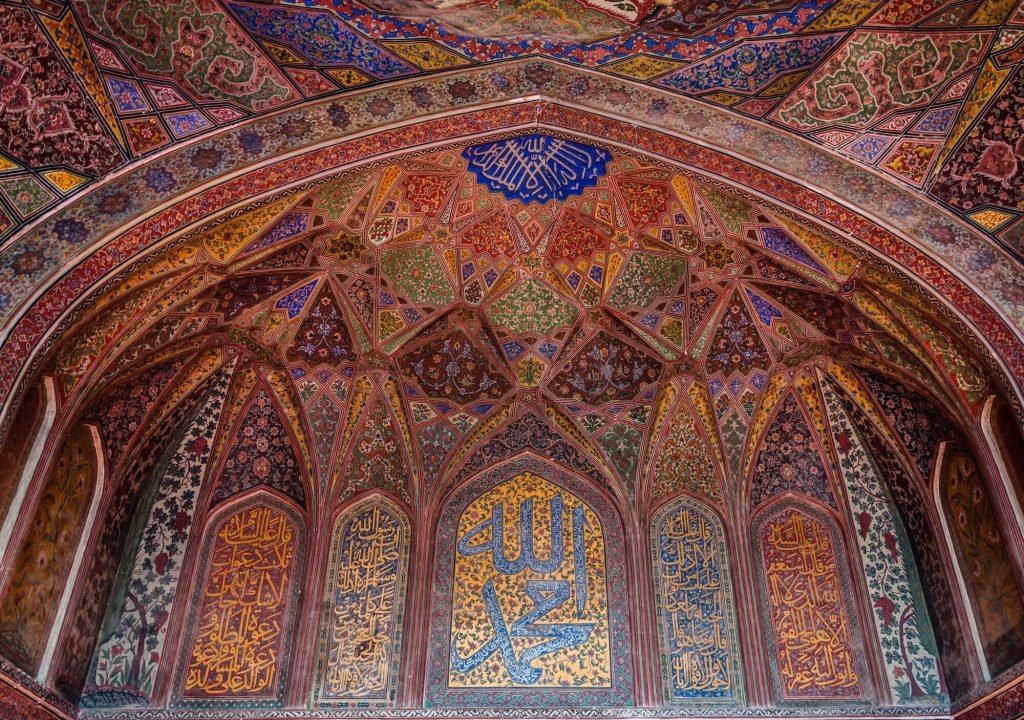
The Wazir Khan Masjid covers an area of 279 by 159 feet. It is predominantly constructed of kankar lime bricks, with a coating of red sandstone on the gate and transept.
The mosque’s layout can be divided into three sections: the entrance, the courtyard, and the main prayer hall.
Entrance to the Wazir Khan Mosque
Visitors enter Masjid Wazir Khan through its Timurid-style iwan, a rectangular structure that serves as the gate. Above the Iwan is the Shahada, the Islamic declaration of faith, written in intricate tilework. Balconies extend left and right from the iwan. The panels flanking the iwan contain Persian quatrains written by the calligrapher Muhammad Ali, a disciple of the Sufi saint Mian Mir.
The panel on the right of the iwan reads: To all who turn towards the Qibla in prayer, may this door remain wide open with prosperity till the day of resurrection.
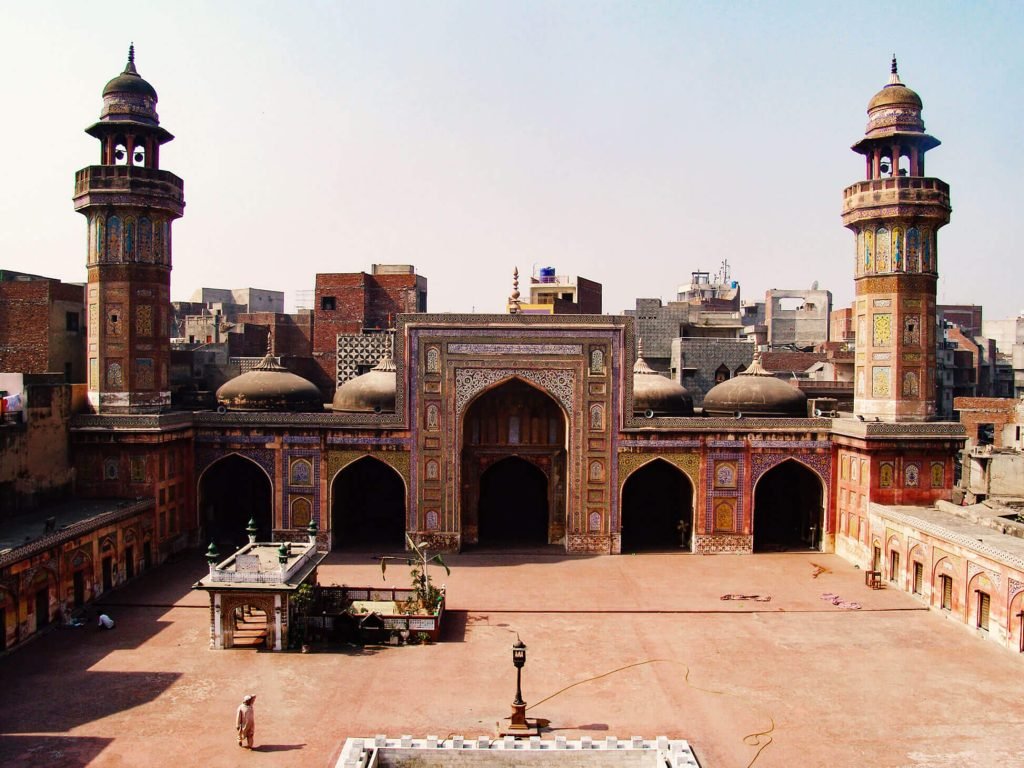
While the panel to the left of the iwan reads: Tillers! Everything we sow in this world we will reap in the next. Lay a good foundation in this life, for everyone must pass through this gate to Paradise.
The iwan leads to a covered octagonal chamber in the mosque’s “Calligrapher’s Bazaar,” which is located in the center of the mosque. The octagonal chamber is located in the heart of the first ‘charsu’ bazaar, or four-axis bazaar, of South Asia. The Calligrapher’s Bazaar is aligned on two of the four axes, while the other two are linked in a straight line from the mosque’s entry gate to the center of the main prayer hall.
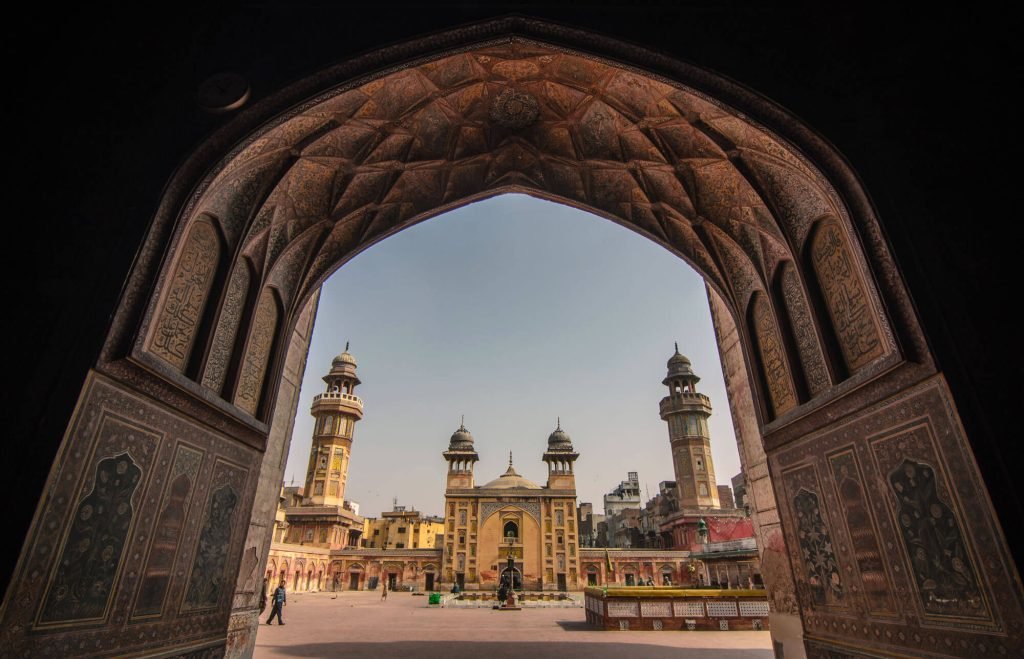
Courtyard of Masjid Wazir Khan
Passage through the portal and octagonal chamber leads into the mosque’s central courtyard. The courtyard is roughly 160 feet by 130 feet in size and consists of high-arched galleries encircling a central brick-paved courtyard, which is a common feature of imperial Persian mosques in Iran.
The mosque’s courtyard also has a pool used for the Islamic ritual of ablution, wudu. The courtyard also houses the tomb of the 14th-century Sufi saint Syed Muhammad Ishaq Gazruni, also known by the name Miran Badshah.
The courtyard is flanked on four sides by 32 khanas, or small study cloisters for religious scholars. The mosque has four minarets located in each corner of the courtyard, which are over 100 feet high.
The main prayer hall of the Wazir Khan Mosque
The mosque’s prayer hall lies at the western part of the site and is roughly 130 feet long and 42 feet wide. It is divided into five sections that are lined into a single long aisle running north to south
The central section of the prayer hall is topped by a tall dome that rests upon four arches, forming a square pavilion—a Persian architectural form known as a Char Taq. The remaining prayer hall is topped by a 21-foot-tall dome built in a style similar to that of the earlier Lodi dynasty. The northern and southern sections also contain small cells that house spiral staircases that lead to the rooftop.
The main prayer hall opens to an ablution pool.
The walls of the prayer halls’ interior are also decorated with calligraphy in both Arabic and Persian. Each section is further divided and contains unique designs. The dome is built so as to allow for the imam’s sermon to be projected across the mosque’s courtyard.
